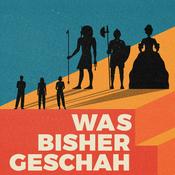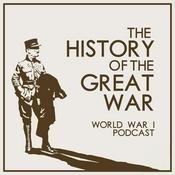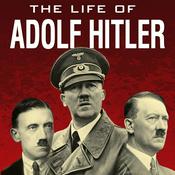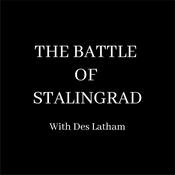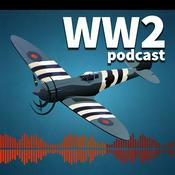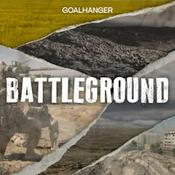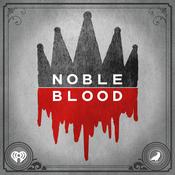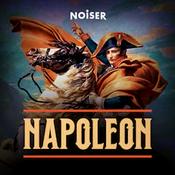Available Episodes
5 of 286
- E185 - Reaping the WhirlwindNovember 2025 During the second half of World War 2, the Allied air forces launched a large-scale heavy bomber offensive against German cities and war industries. This was designed to damage Germany's ability and will to continue the war. It also represented a way for Britain and the USA to support the Soviet Union before the D-Day invasion. The whole campaign was guided by intelligence, to identify the right targets, determine how badly they were damaged, and assess the effects on the German war effort. This huge undertaking taxed Allied intelligence capabilities to their limits. It has since become one of the many contended issues in the debates around this costly and controversial campaign. In this 'It Happened Here' episode, we are joined by Research Officer Dr Thomas Cheetham to explain the ways Signals Intelligence from Bletchley Park did - and didn't - guide Allied bombing strategy. Our thanks go to Owen Moogan and Sarah Langston for voicing our historical documents. Image: © National Museum of the US Air Force (Public Domain) This episode is a follow up to episodes E170 & E171. #BPark, #Bletchleypark, #WW2, #Enigma, #BomberCommand, #USAAF,--------59:34
- E184 - The SIS at BPOctober 2025 Today GCHQ is an independent British intelligence organisation. However during World War 2, GC&CS, as it was then called, continued to be subordinate to the British Secret Intelligence Service, known as SIS or MI6. The Chief of SIS was also the Director of GC&CS. In this episode, we explore the relationship between the two organisations, the part that SIS played in supporting GC&CS, and the ongoing presence of SIS at Bletchley Park itself. Head of Content, Erica Munro, is joined by our Research Historian, Dr David Kenyon, and by a special guest - historian and expert on the wartime history of SIS, Dr Claire Hubbard-Hall. To see the objects we discuss in this episode, visit https://www.bletchleypark.org.uk/our-story/e184-the-sis-at-bletchley-park/ Claire’s book ‘Her Secret Service: The Forgotten Women of British Intelligence’ is available from all good bookshops. Image: ©Bletchley Park Trust 2025 #BPark, #Bletchleypark, #WW2, #Enigma, #MI6, #SIS, #SecretService,--------1:00:36
- E183 - 'Ladies & gentlemen, go your ways!'September 2025 In 1945, Britain celebrated VE Day in May and VJ Day in August, as the war - first in Europe and then the Far East - came to an end. For the staff of GC&CS and its larger worldwide network, this meant that the vital and exhausting work they'd been doing suddenly stopped. The lives of all of them had been changed forever, but each person's experience was different. Bletchley Park's Oral History archive is a treasure trove of Veterans' testimonies. In this It Happened Here episode, we will be digging into our sound archive to focus on how the workers reacted and what happened to them once peace was declared, in their own words. Our guide through these stories is Bletchley Park’s Research Historian Dr David Kenyon. This episode features the following Veterans’. Nora Copleston Miriam Myland Mary Kenyon Ron Unwin Betty Lawrie John Statham Betty Flavell Fay Gold Joan Smeaton Gwen Page Dot Tuffin Kenneth Nicholson John Moseley Jimmy Thirsk Rena Stewart Mary Every Daphne Canning Betty Webb Lady Marion Body Margaret Thomas Image: ©Bletchley Park Trust 2025 #BPark, #Bletchleypark, #WW2, #Enigma, #VEDay80, #VJDay80,--------1:01:55
- E182 - "… and Peace at Last"August 2025 On 15 August 2025 the UK commemorated the 80th anniversary of VJ Day, the day on which the surrender of Japan and the end of World War Two was announced. This was a significant moment at Bletchley Park as it meant the end of almost six years of non-stop codebreaking and intelligence work. For many it also brought an abrupt halt to years of training to learn Japanese and long journeys to reach postings in India, Sri Lanka and elsewhere in preparation for the upcoming invasion of Japan itself. In this ‘It Happened Here’ episode we are joined by Bletchley Park’s historians Dr Tom Cheetham and Dr David Kenyon to discuss how the Japanese war ended and the part played by Bletchley Park and signals intelligence. Our thanks go to Owen Moogan and Dr Ben Thompson for voicing our historical documents. Image: Japanese surrender aboard the USS Missouri. Public Domain, United States Navy. #BPark, #Bletchleypark, #WW2, #Enigma, #VJDay80,--------1:02:38
- E181 - Blitzkrieg in BurmaJuly 2025 By late 1944, the tide had turned against the Japanese in south-east Asia, with the repulse of their attempted invasion of India. However, the multi-national Allied forces in Burma still faced enormous challenges if they were to retain the initiative, and push the enemy out of the country. Every mile travelled from their supply bases, across barely-navigable expanses of jungle and mountain, exposed Allied troops to greater difficulties and risk of starvation and destruction. It was a struggle against the terrain and a race against time to liberate Burma before the arrival of the monsoon. In this struggle, intelligence and deception were essential weapons in the Allied arsenal. In this It Happened Here episode, Head of Audiences and Programmes Vicki Pipe is joined by Research Officer Dr Thomas Cheetham to explore the 1945 battles for Burma and the race to Rangoon which formed the climax of Britain’s war against Japan. This episode features Veteran’s Eric Rhodes, Roy Buckmaster and Dennis Underwood, from our Oral History archive. Our thanks go to Owen Moogan and Dr Ben Thompson for voicing our historical documents. Image: Oil painting of General William Slim, 1st Viscount Slim. #BPark, #Bletchleypark, #WW2, #Enigma, #14thArmy,--------54:23
More History podcasts
Trending History podcasts
About Bletchley Park
Bletchley Park is the home of British codebreaking and a birthplace of modern information technology. It played a major role in World War Two, producing secret intelligence which had a direct and profound influence on the outcome of the conflict. The site is now a museum and heritage attraction, open daily.
The Bletchley Park Podcast brings you fascinating stories from Veterans, staff and volunteers on the significance and continued relevance of this site today.
Podcast websiteListen to Bletchley Park, Empire and many other podcasts from around the world with the radio.net app

Get the free radio.net app
- Stations and podcasts to bookmark
- Stream via Wi-Fi or Bluetooth
- Supports Carplay & Android Auto
- Many other app features
Get the free radio.net app
- Stations and podcasts to bookmark
- Stream via Wi-Fi or Bluetooth
- Supports Carplay & Android Auto
- Many other app features


Bletchley Park
Scan code,
download the app,
start listening.
download the app,
start listening.














